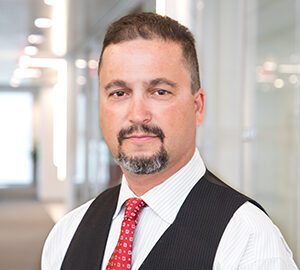The number of available jobs in municipal government is growing and yet local governments continue to have difficulty filling these positions. Some municipalities struggle to retain municipal public safety employees and others struggle to secure qualified applicants to fill empty positions. Retention is a unique problem in the law enforcement field for multiple reasons such as early retirements and workload strain1. Overall, there is relatively strong understanding of the reasons why public servants are leaving the workforce there is limited evidence on why these positions are hard to fill.
NLC and others have suggested that a reimagination of the public safety workforce – one that is inclusive of non-traditional careers to better align skills with the work required – may address some of these challenges with recruitment and retention2. Here we examine three common explanations as to why these positions are hard to fill and provide an analysis to explore whether they may also be influencing recruitment efforts in the public safety workforce.
Competition With Private (And Other) Sectors
A common refrain is that this issue is due to competition with the private sector workforce. Employers seeking traditional public safety skills draw from the same pool of candidates as military, security, construction, transportation and public policy fields. However, as shown below, with an expanded set of skills via a reimagined job description, the public safety careers have additional industries from which it can draw employees; alternatively, it has additional areas of competition from which to recruit and retain employees.
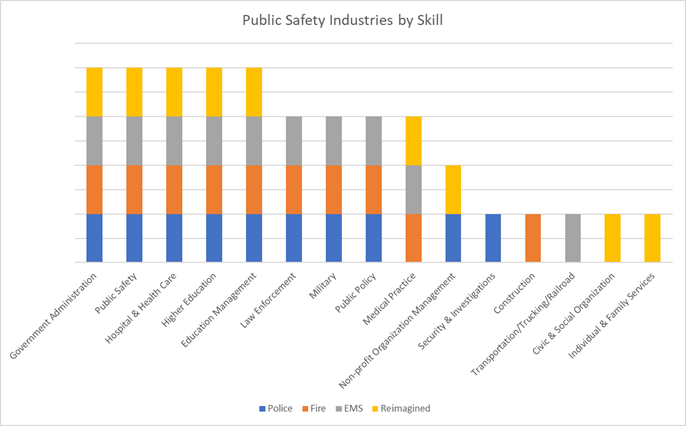
However, a new and more expansive vision of the hiring process and benefits could ensure that the public safety workforce is competitive with other industries.3 The reimagination of the public safety workforce not only expands the field from which municipalities can recruit, it also addresses some of the concerns over the representation of women in the field.
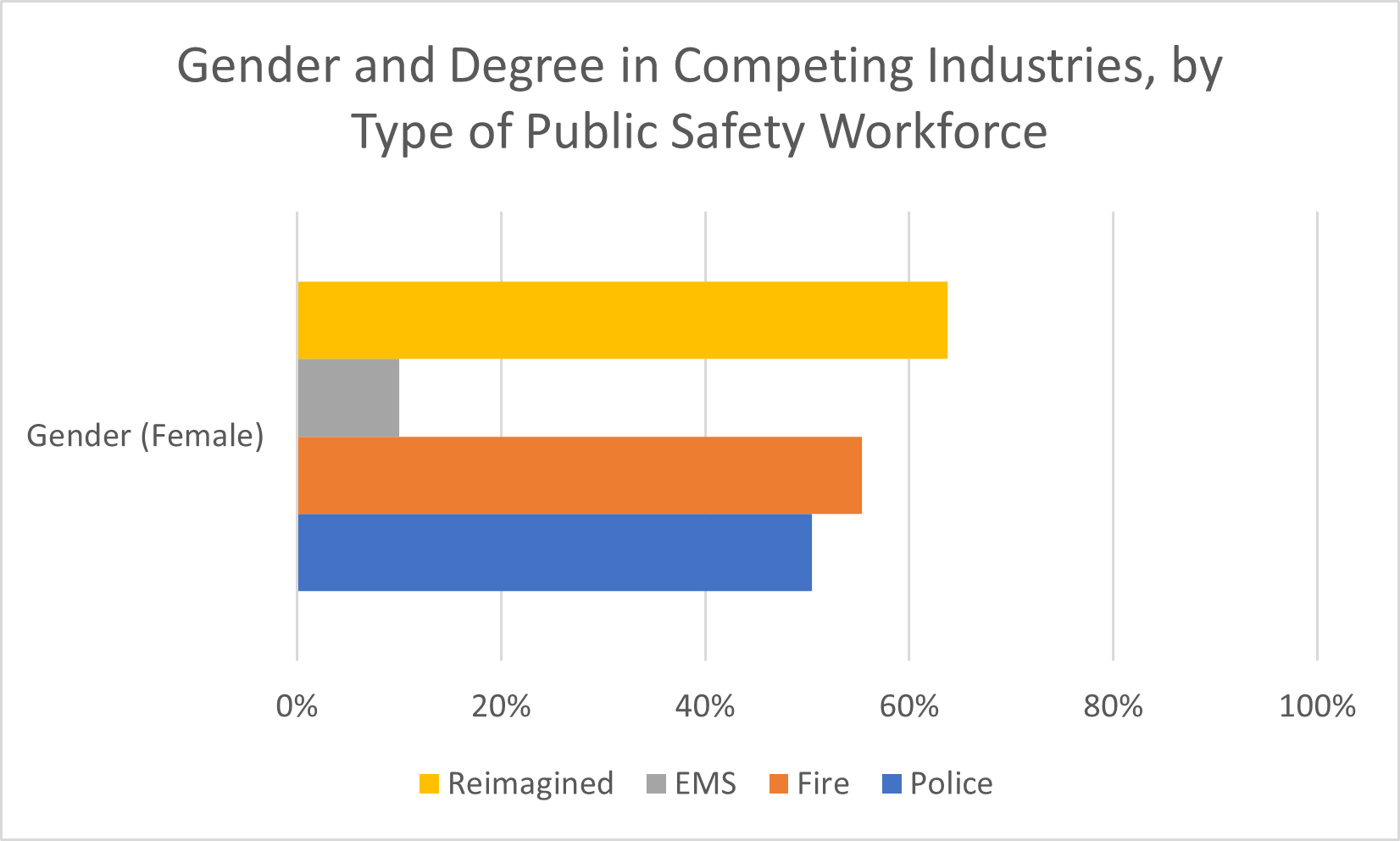
Other analyses of the traditional public safety workforce have highlighted issues such as the degree and certification requirements, residency requirements for city employees and the decrease in perceived value of pension and other benefits as factors that hamper the ability to recruit new officers.4
Municipalities coast to coast are diverse places, yet many public safety departments do not reflect this diversity. In fact, the NLC Workforce Analysis reports “Black or African American people make up 13.6 percent of the U.S. population but only nine percent of the nation’s police force. Hispanic or Latino/a people only make up 11 percent of the country’s police despite making up 18.9 percent of the population.” Likewise, women make up 49 percent of the population yet only 14 percent of public safety roles in municipal government.5 The public safety workforce has come under great scrutiny over the last decade for practices and policies that are not responsive to the citizens they serve. These factors lead to health and wellness strains on the public safety workforce which are impacting retention and may also be influencing recruitment success.
By growing the workforce to include new people with different skills and talents municipalities we can address these concerns. Our analysis shows that Police, Fire and EMS need targeted recruitment and an expansion of the components of the public safety workforce to achieve better gender equity. Currently, as shown below, women make up less than half of the public safety workforce. In fire and police jobs they make up fewer than 20 percent. However, in a representative workforce, they would account for more than 70 percent of these roles. Importantly, this expansion would also have the potential to encourage more gender equity in representation of men in the roles such as crisis intervention and mental health.
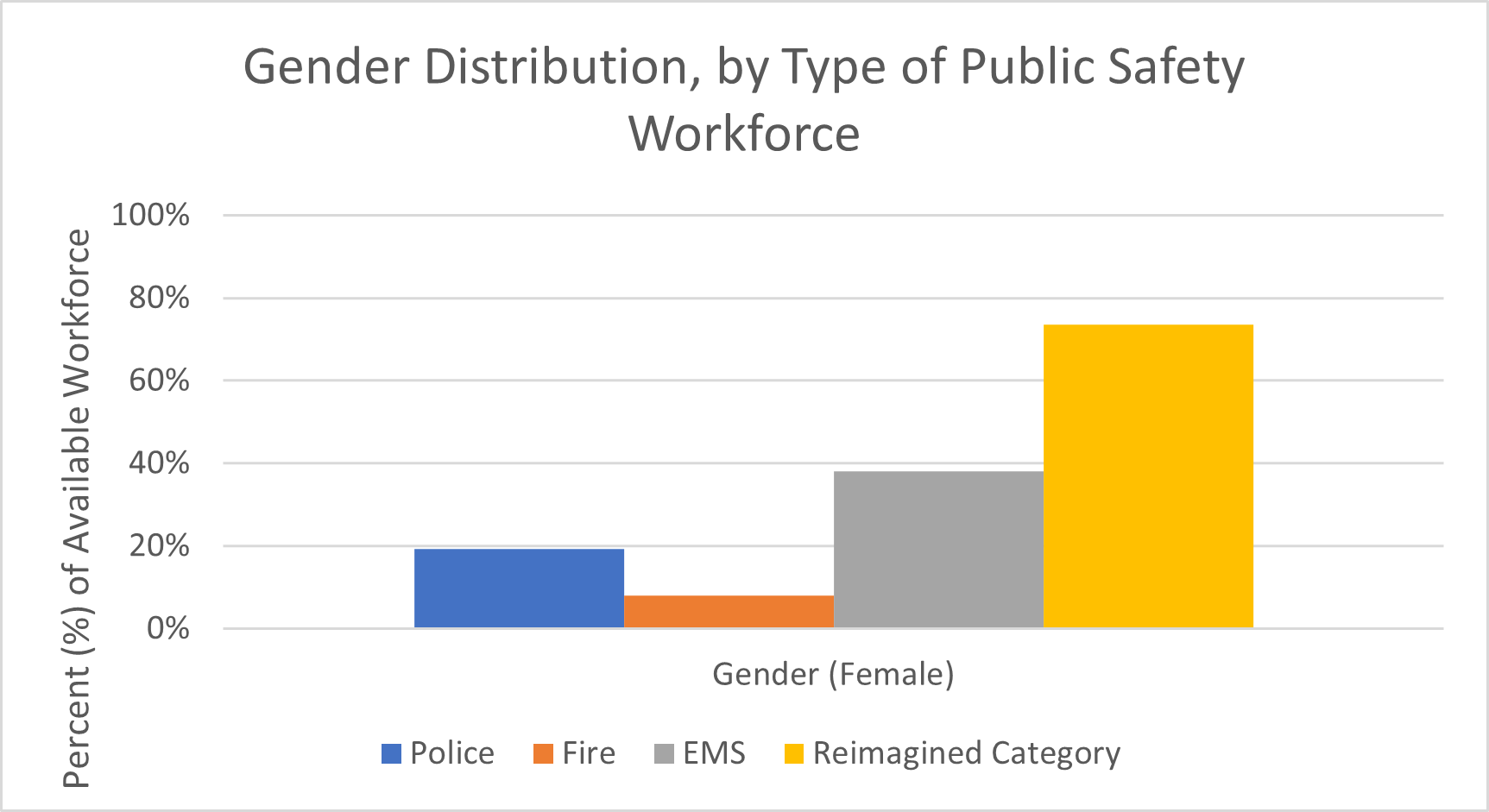
Skills and Tasks Do Not Align With Positions
To create a reimagined public safety workforce we must take into account careers inclusive of (but not limited to) those in crisis response and intervention, mental health care/response, and case management. As noted above, these jobs significantly change the demographics of the public safety workforce but they also allow us to better match skills with the needs of the community to ensure public safety for all. In the figure below we can see that there are overlaps in the skills needed for these positions, however, there are unique skills that our public safety workforce is currently asked to do that do not fall into the skill base upon which they are hired. Specifically, only EMS includes healthcare and emergency medicine and other skills fall under job titles for the reimagined category that are not present anywhere in other public safety workforce titles.
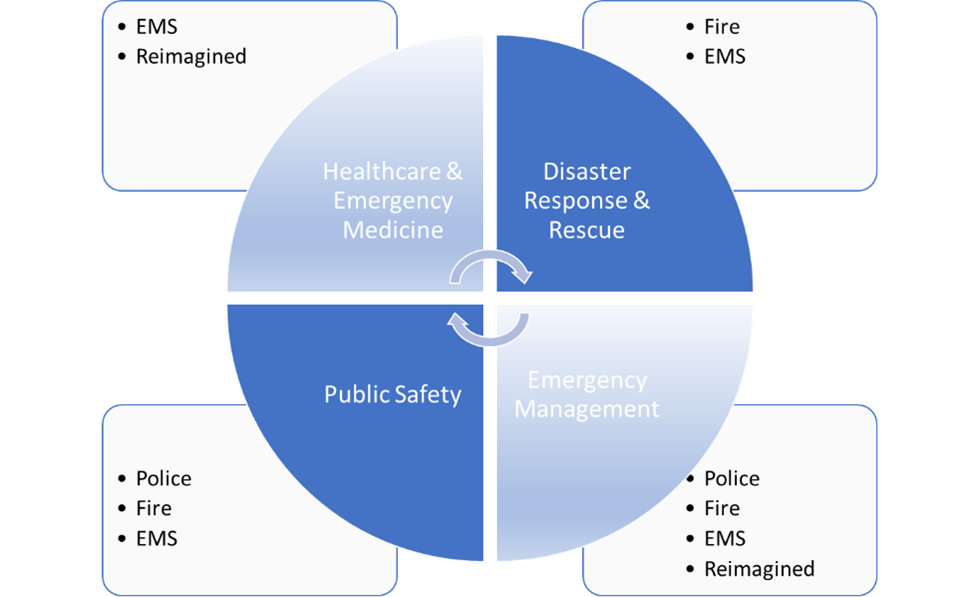
Next Steps
In sum, the challenge of meeting our nation’s public safety needs demands a willingness to reimagine our public safety workforce. The integration of core components of the current day-to-day work of public safety into explicit jobs such as crisis intervention and mental health provides a great opportunity to diversity the workforce in terms of skills, qualifications and representativeness. This expansion will also allow for an expansion of the potential talent pool.
NLC is committed to supporting cities, towns and villages as they navigate new and innovate ways to reimagine the public safety workforce. See the resources and publications below to learn more about related work:
Reimagining Public Safety A Toolkit for Cities and Towns
Reimagining Public Safety Taskforce
Mayoral Network on Community Safety and Violence Prevention Summary Report
How Can Cities Advance Public Safety?How Local Governments are Building Alternative Public Safety Models
Methodology
This analysis examined the status of the law enforcement job market in three ways. First, the authors identified key job titles that exist in the four realms of public safety identified above. We used these titles to examine the skills identified on LinkedIn associated with these jobs separately.
LinkedIn Talent Insights is not fully representative of the entire US Labor Market; however, it is still a very robust dataset. LinkedIn Talent Insights data shows 142+ million USA-based engaged quality members actively utilizing LinkedIn. Talent Insights highlights the top companies employing this talent across the US, top schools producing this talent, top skills & job titles, etc. Across the US, over 5.3+ million full-time job posts are on LinkedIn that can be observed through LinkedIn Talent Insights. These data also include substantial gaps in salary data disallowing the inclusion of that variable in this analysis.
1 https://slge.org/wp-content/uploads/2023/05/2023workforce.pdf; https://www.policeforum.org/assets/RecruitmentRetention.pdf; https://www.themarshallproject.org/2023/01/21/police-hiring-government-jobs-decline?utm_campaign=opening-statement&utm_medium=email&utm_source=newsletter&utm_term=3100-hiring-woes-not-just-a-police-problem&utm_source=The+Marshall+Project+Newsletter&utm_campaign=3807edf78d-EMAIL_CAMPAIGN_2023_01_23_12_11&utm_medium=email&utm_term=0_5e02cdad9d-3807edf78d-%5BLIST_EMAIL_ID%5D
2 Public Safety 1, Public Safety 2.
3 https://www.scattergoodfoundation.org/wp-content/uploads/2023/04/VisionPhila-PublicSectorWorkforce_FINAL.pdf
4 VisionPhila-PublicSectorWorkforce_FINAL.pdf (scattergoodfoundation.org); https://www.policeforum.org/assets/RecruitmentRetention.pdf
5 https://www.nlc.org/resource/public-safety-workforce-in-the-post-covid-era/



